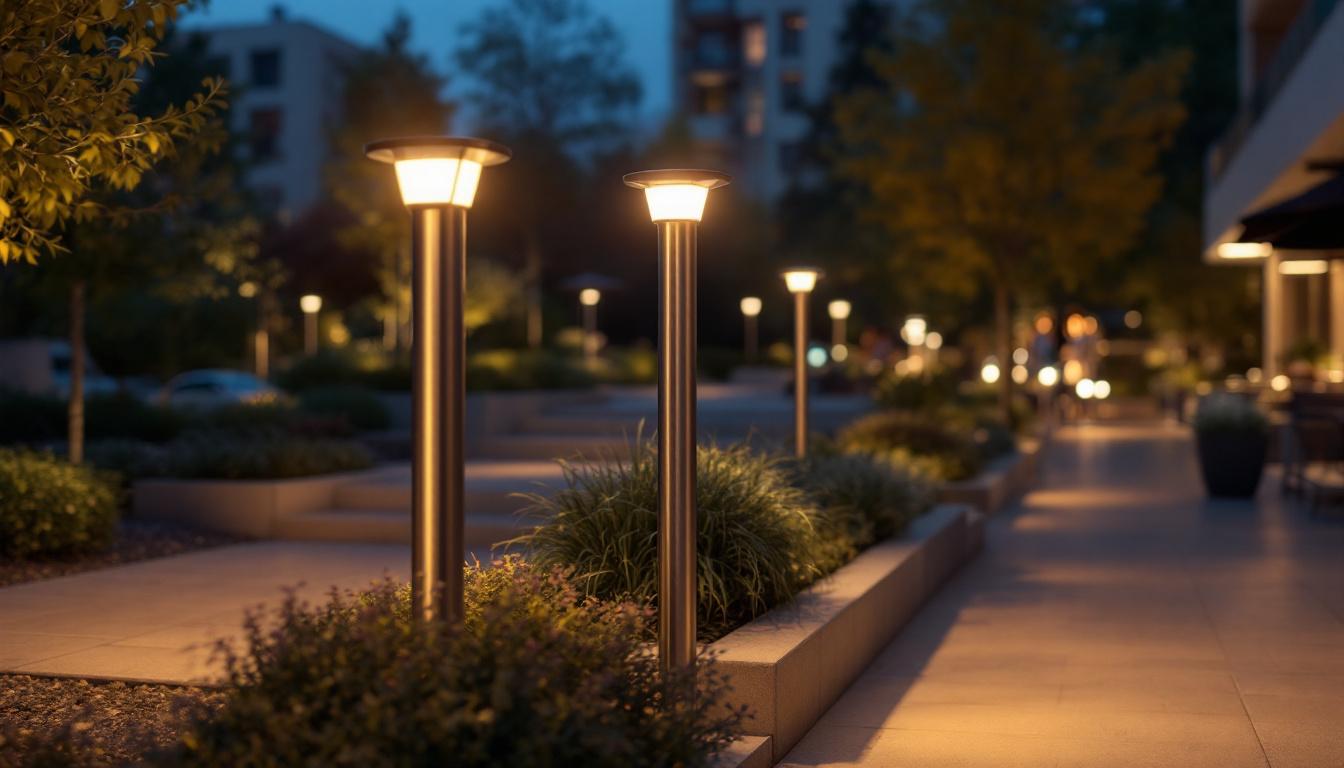
In the fast-paced world of lighting installation and design, contractors often face a myriad of challenges. While technical skills and product knowledge are essential, understanding the common pitfalls in the industry can significantly enhance project outcomes and client satisfaction. This article delves into the frequent mistakes made by lighting contractors and offers insights from Keystone Technologies to help avoid these missteps.
One of the most critical phases in any lighting project is the initial consultation with the client. Many contractors overlook this step, rushing into the design and installation process without fully grasping the client’s vision. This oversight can lead to misaligned expectations and dissatisfaction.
Taking the time to conduct thorough consultations allows contractors to gather essential information about the client’s needs, preferences, and budget constraints. Engaging in open dialogue fosters trust and sets a solid foundation for the project, ensuring that the final outcome aligns with the client’s expectations. During these consultations, it is beneficial to ask open-ended questions that encourage clients to express their ideas and desires. For instance, discussing the atmosphere they wish to create can unveil insights into their lifestyle and how they intend to use the space. This understanding can guide the selection of lighting styles, such as whether to opt for warm, inviting tones or bright, energizing lights.
Another common mistake is not adequately assessing the physical space where the lighting will be installed. Each environment has unique characteristics that can significantly impact lighting effectiveness. Factors such as wall color, ceiling height, and existing architectural features must be considered to create a well-balanced lighting design.
By conducting a comprehensive assessment, contractors can identify potential challenges and opportunities for enhancement. This proactive approach not only improves the aesthetic appeal but also enhances functionality, ensuring that the lighting serves its intended purpose. For example, in spaces with high ceilings, it may be necessary to use fixtures that can effectively distribute light downward, creating a cozy ambiance without overwhelming the room. Additionally, understanding the natural light sources within the space can aid in determining how artificial lighting should be layered, allowing for a harmonious blend of daylight and electric light. This attention to detail not only elevates the design but also ensures that the lighting complements the overall architecture and decor of the space.
The selection of lighting fixtures is a crucial aspect of any project. However, many contractors make the mistake of choosing fixtures based solely on aesthetics rather than functionality and compatibility with the space. This can lead to issues such as inadequate illumination or excessive glare.
It is essential to consider the specific requirements of each area when selecting fixtures. For instance, task lighting in workspaces should be bright and focused, while ambient lighting in living areas should create a warm and inviting atmosphere. Understanding the nuances of different lighting types can help contractors make informed decisions that enhance both form and function. Additionally, the size and scale of the fixtures should be proportionate to the space they occupy; oversized fixtures in small rooms can overwhelm the design, while tiny fixtures in expansive areas may go unnoticed. Incorporating dimmers and smart lighting controls can also provide flexibility, allowing users to adjust the lighting based on their needs and preferences.
In today’s environmentally conscious market, energy efficiency is more important than ever. Many contractors overlook this aspect, opting for traditional lighting solutions that may not be the most efficient choice available. This oversight can lead to higher energy costs for clients and may even result in regulatory compliance issues.
Contractors should prioritize energy-efficient options, such as LED lighting, which not only reduces energy consumption but also offers longer lifespans and lower maintenance costs. Educating clients about the benefits of energy-efficient lighting can also enhance their overall satisfaction and foster long-term relationships. Furthermore, integrating smart lighting systems that adapt to the natural light available in a space can significantly reduce energy usage, as these systems can automatically adjust brightness levels throughout the day. By showcasing the long-term savings and environmental benefits of energy-efficient lighting, contractors can position themselves as forward-thinking professionals who care about sustainability, ultimately attracting a more eco-conscious clientele.
Installation is a critical phase that requires meticulous planning. Many contractors dive into the installation process without a well-thought-out strategy, leading to chaos and inefficiencies. This can result in delays, increased costs, and subpar installation quality.
Effective planning involves creating a detailed timeline, allocating resources, and ensuring that all team members are on the same page. By establishing clear objectives and milestones, contractors can streamline the installation process and minimize disruptions, ultimately leading to a more successful project. Furthermore, utilizing project management tools can enhance communication and collaboration among team members, allowing for real-time updates and adjustments. Regular check-ins and progress reviews can also help identify potential roadblocks early, enabling teams to pivot and adapt their strategies as needed.
Safety should always be a top priority in any lighting installation project. However, some contractors may neglect safety protocols, putting both their team and clients at risk. This can lead to accidents, injuries, and potential legal liabilities.
Implementing rigorous safety measures is essential. This includes providing proper training for team members, using appropriate personal protective equipment (PPE), and adhering to local safety regulations. A commitment to safety not only protects individuals but also enhances the contractor’s reputation and credibility in the industry. Additionally, conducting regular safety audits and drills can reinforce a culture of safety within the team. By fostering an environment where safety is prioritized, contractors can ensure that everyone feels empowered to voice concerns and report unsafe conditions, ultimately creating a more secure workplace for all involved.
Effective communication is vital throughout the project lifecycle. Contractors often make the mistake of failing to provide regular updates to clients, leading to confusion and frustration. Clients appreciate being kept in the loop, and a lack of communication can erode trust and satisfaction.
Establishing a communication plan at the beginning of the project can help ensure that clients receive timely updates on progress, challenges, and any changes to the original plan. This transparency fosters a collaborative environment and strengthens the contractor-client relationship.
Collaboration among team members is equally important. Contractors sometimes underestimate the value of teamwork, leading to miscommunication and inefficiencies. When team members work in silos, it can result in duplicated efforts or overlooked tasks.
Encouraging open communication and collaboration among team members can enhance productivity and ensure that everyone is aligned with the project’s goals. Regular team meetings and collaborative tools can facilitate this process, leading to a more cohesive and efficient workflow.
After the installation is complete, many contractors make the mistake of skipping the final walkthrough with the client. This step is crucial for ensuring that the project meets the client’s expectations and that any issues are addressed promptly.
A final walkthrough provides an opportunity to demonstrate the functionality of the lighting system, answer any questions, and discuss maintenance requirements. This proactive approach not only enhances client satisfaction but also allows contractors to identify any potential issues that may need attention.
Once the project is completed, the responsibility does not end there. Contractors often overlook the importance of educating clients about proper maintenance and care for their new lighting systems. Without this knowledge, clients may inadvertently damage fixtures or fail to optimize their lighting systems.
Providing clients with clear instructions on maintenance routines, troubleshooting tips, and when to seek professional assistance can empower them to take better care of their lighting systems. This not only prolongs the lifespan of the fixtures but also reinforces the contractor’s commitment to quality service.
The lighting industry is constantly evolving, with new technologies and trends emerging regularly. Contractors who resist adapting to these changes may find themselves at a disadvantage. Sticking to outdated practices can hinder creativity and limit the ability to offer clients the latest solutions.
Staying informed about advancements in lighting technology, such as smart lighting systems and energy-efficient solutions, is essential for contractors looking to remain competitive. Engaging in continuous education and training can help contractors expand their skill sets and better serve their clients.
Feedback from clients and team members is invaluable for growth and improvement. However, some contractors may overlook this feedback, missing opportunities to enhance their services. Constructive criticism can provide insights into areas for improvement and help contractors refine their processes.
Creating a culture of openness where feedback is encouraged can lead to continuous improvement. Regularly soliciting input from clients and team members can help identify strengths and weaknesses, ultimately leading to better project outcomes and client satisfaction.
In the competitive landscape of lighting contracting, avoiding common mistakes can significantly impact project success and client satisfaction. By understanding the importance of thorough consultations, careful product selection, meticulous installation practices, effective communication, and a commitment to continuous learning, contractors can elevate their services and build lasting relationships with clients.
Keystone Technologies emphasizes the importance of learning from past experiences and adapting to the ever-changing demands of the industry. By addressing these common pitfalls, lighting contractors can enhance their reputation, improve project outcomes, and ultimately thrive in a dynamic marketplace.
Don’t let common mistakes undermine your lighting projects. At LumenWholesale, we provide you with the tools to succeed. Our spec-grade lighting products meet the highest industry standards, ensuring your installations shine with reliability and performance. Say goodbye to inflated markups and hello to unbeatable wholesale prices, free shipping, and the convenience you deserve. Elevate your lighting game and give your clients the quality they expect. Take the next step towards project excellence with Wholesale Lighting at the Best Value at LumenWholesale.

Discover the essentials of solar-powered black lights in this comprehensive guide tailored for lighting contractors.

Discover how commercial LED bollard lights can enhance profitability in lighting installations.

Discover the benefits of motion sensor lights and how they can enhance your lighting installation projects.

Discover the essential insights every lighting contractor needs about industrial style pendant lamps.